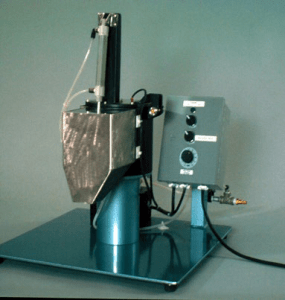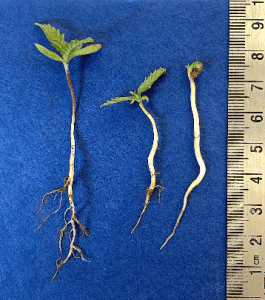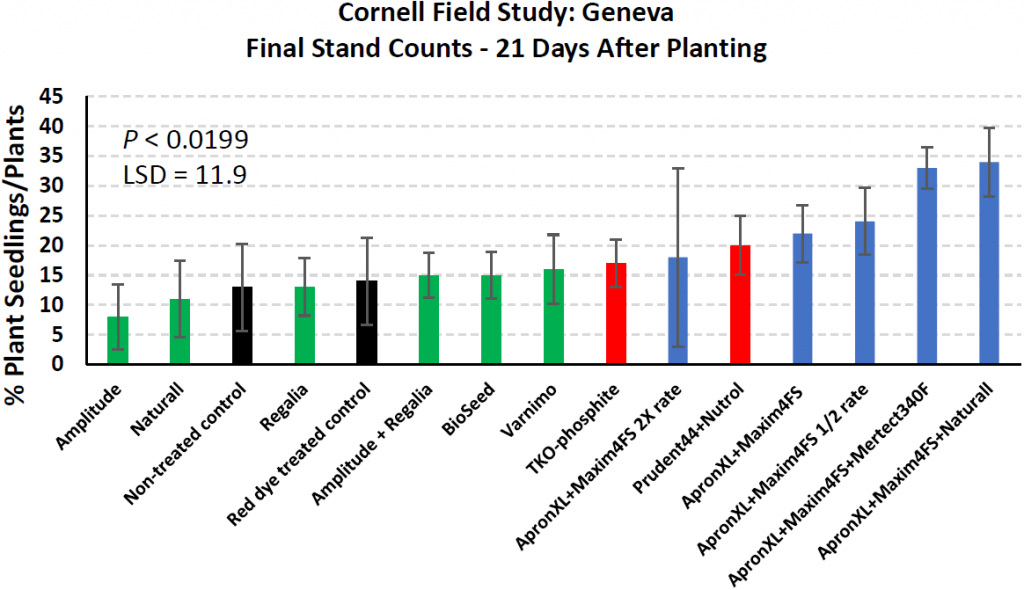Click here for a printer-friendly version of this document.
Authors:
Alan Taylor, Hilary Mayton, Michael Loos, Masoume Amirkhani, Gary Bergstrom, Jennifer Star, Kevin Myers

Project Overview:
The purpose of this research is to collect efficacy data on biological and chemical fungicide seed treatments on hemp for the management of damping-off caused by several pathogens (Pythium, Fusarium, and Rhizoctonia). Seed treatments were evaluated in 2 locations in NYS: CornellUniversity, East Ithaca and Cornell AgriTech, Research North. Additional trials were also established in North Dakota and Virginia.
Seed Treatments and Planting:
Seed treatments of a single hemp seed lot ‘Anka’ were treated in Dr. Taylor’s Seed Science and Technology lab (Fig 1). The field study sown on June 12th at East Ithaca (Arkport fine sandy loam soil) had good field prep and planting conditions which resulted in adequate germination and seedling survival. The field study sown on July 3rd at Geneva (Lima silt loam) had wet conditions followed by a hot and dry period that resulted in poor germination and low stand counts due to soil crusting (Fig 2).

Data Collection/Evaluations:
Stand counts were taken every 5-7 days for 3 weeks at each location. In addition, plants were evaluated for disease incidence via visual inspection of signs and symptoms of pathogen development. After the final stand count, a subsample was destructively harvested and rated for root rot. Samples with signs of disease were evaluated for pathogens in the Bergstrom Lab at Cornell University. Pythium, Fusarium and Rhizoctonia, Alternaria, Colletotrichum, and Epiccocum species were found in plants sampled at E. Ithaca.


Conclusions:
All chemical seed treatments (blue bars) and Phosphite seed treatments (red bars)had significantly higher stand counts than the non-treated controls at E. Ithaca (Fig 3). At Geneva, only ApronXL+Maxim4FS+Naturall, ApronXL+Maxim4FS+Mertect340F had better stands than the nontreated (Fig 4). In general, the biological seed treatments did not improve plant stands. Soil type and planting conditions can significantly influence hemp stand establishment and growth, however, in general, chemical seed treatments can improve overall stand establishment.